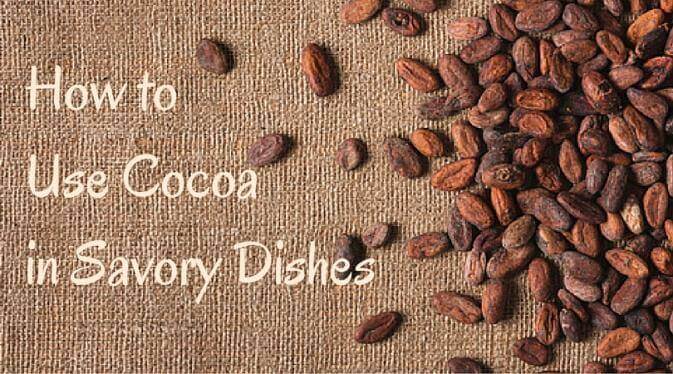The Savory Side of Chocolate
Get more of the health benefits of chocolate without increasing your sugar intake.
Monica Reinagel, MS, LD/N, CNS
Listen
The Savory Side of Chocolate

It’s not exactly breaking news that chocolate has health benefits. This is some of the most popular nutrition research out there, because it gives us an excuse to enjoy one of life’s most delicious foods with a clear conscience.
See also: Health Benefits of Chocolate
Much of the positive research on cocoa relates to cardiovascular health. Regular intake of cocoa flavanols is linked with lower cholesterol, reduced blood pressure, improved blood vessel elasticity, and reduced tendency to form blood clots. And the news just keeps getting better.
Cocoa flavanols also appear to be protective against Type 2 diabetes. Another trial found that it improved the appearance of wrinkled and sun-damaged skin. And just the other week, my colleague Dr. Gil Tolan forwarded me two studies finding that the flavanols in chocolate help protect cognitive function as we age.
What’s the Optimal Amount of Cocoa Flavanols?
Many of these studies suggest a dose response, meaning that the benefits increase with higher intake of cocoa flavanols—yet we’re usually told to limit our consumption to one ounce of dark chocolate a day.
It’s not necessarily that the benefits peak at that dose of flavanols. It’s because most people like to consume their cocoa flavanols in the form of chocolate, which also contains a fair amount of sugar and fat. Researchers worry that the potential benefits of increasing flavanol consumption would be overshadowed by the negative impact of increasing sugar and fat consumption.
Maybe you’re one of those people who can dutifully enjoy one—but only one—square of dark chocolate along with your one—but only one—glass of red wine. More power to you! Some of us, however, find it challenging to hold the line at one square.
Today, I want to suggest some ways that you can increase your cocoa flavanol intake and enjoy all those increased health benefits, without any downside. No extra sugar added to your diet and no danger of accidentally eating the entire 1 pound bar of chocolate that was supposed to get you through the rest of the month while watching an episode of House of Cards. Not that that’s ever happened to me.
I’m not talking about taking a cocoa flavanol supplement—although these exist. But you know me better than that! I’m talking about getting to know the savory side of cocoa.
How to Use Cocoa in Savory Dishes
Most people I know have a tin of unsweetened cocoa powder in their cupboard but rarely use it for anything besides making hot chocolate, brownies, or chocolate frosting. I’d like to suggest moving your cocoa powder from the shelf where you keep your baking ingredients and putting where you keep your spices instead. Thinking of cocoa powder as a spice opens up a whole new world of uses that don’t increase your sugar intake.
Here are a few ideas to get you started:
- Cocoa + chile peppers. Central American cuisine often combines unsweetened chocolate with hot chili peppers. This is the basis for a classic mole sauce. But you can also just throw a spoonful of unsweetened cocoa powder into your favorite chili recipe. (There’s also a recipe for Chili con Cocoa in my book Secrets for a Healthy Diet.)
- Cocoa spice rubs. Dry spice rubs offer an alternative to wet marinades for meat. They add flavor and also help prevent the formation of harmful compounds when meat is grilled. Try combining cocoa powder, black pepper, kosher salt, and freshly ground coffee beans for a dark and complex spice rub for a pork or beef tenderloin.
- Cocoa + beans. Try adding a spoonful of cocoa powder to black bean soup for an unexpected treat. This works equally well with soup out of the can or homemade. You can also stir cocoa powder into bean dip or refried beans to excellent effect.
- Cocoa + balsamic. The bitterness of cocoa powder pairs brilliantly with the sweetness of balsamic vinegar. Try whisking some cocoa powder into a good aged balsamic and then drizzling in some walnut oil for a homemade vinaigrette. It’s especially good over a roasted beet salad—or (dare I say it?) over vanilla ice cream.
- Cocoa + curry. Curry powder typically includes turmeric, cumin, ginger, and other assertive flavors. Cocoa’s slightly bitter astringency fits right in and adds an unexpected twist. Try mixing a little cocoa powder into your curry powder. It would be particularly good in a curried eggplant dish.
I’ve created a Pinterest board for savory recipes using cocoa powder and unsweetened chocolate that you can browse for more inspiration. Feel free to send me any others you find (or invent) and I’ll add them!

